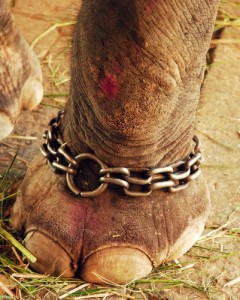You think your crises are difficult to manage? Try doing it on the most inhospitable land mass in the world. That’s what Martin Boyle of the Australian Antarctic Division has to do every day.
Nowhere is the weather more unforgivable. Nowhere is the margin of error between life and death slimmer. Nowhere else are hypothermia and workers that “get pissed, fall down a crevasse and die” two of the biggest employee risks, as Boyle explained during his presentation on the topic at the World Conference on Disaster Management earlier this week in Toronto.
Today, as agreed to under the Antarctic Treaty, the Aussies manage 42% of this rock and ice mass.
I say manage because, technically, Antarctica doesn’t “belong” to anyone. Various countries (chiefly, Australia, the United States, Russia, Norway, Argentina, Chile, New Zealand, France and the UK) have divvied up land claims to maintain research operations and, probably even more so, express their sovereignty by sticking a flag in the ice.
This year marks the centennial of Australian exploration of Earth’s southernmost continent. And, really, the risks there haven’t changed much since Ernest Shackleton first put out the following ad for people to accompany him on his maiden voyage to Antarctica: “Men wanted for hazardous journey. Small wages, bitter cold, long months of complete darkness, constant danger, safe return doubtful.”
The main threat on the continent is people turning up missing. Through a series of international agreements, nations have together formed five search-and-rescue divisions. Informally, they had always pitched in to assist one another when times called for it, but it wasn’t until 2008 that all five sat down to formulate some unified procedures. “After that meeting we had a lot of progress, got a lot of training systems in place and [developed] a lot of coordination,” said Boyle. “It’s that sort of relationship building between these different search and rescue groups that has really helped us out…You just can’t operate in Antarctica on your own. Everyone has to work together.”
Banding together to find stranded scientists or other personnel is particularly helpful in the winter months when temperatures plummet and no aviation is possible across the whole continent. It’s simply too cold and dark to fly so the individual bases have to make due with the provisions on site until a resupply comes next summer. And this complicates everything.
“If something happens in the winter,” said Boyle, “they have get by with what they have.”
One grave risk, then, is losing supplies to fire. “Fire is one of the most dangerous hazards in Antarctica since it’s so dry that buildings can go up in minutes,” said Boyle. “Essentially, we just have to let them go. We can’t fight a fire in Antarctica so our focus is on prevention certainly. It’s quite difficult because the water freezes in the hoses.”
When something does go awry, they also have to face the fact that medical services generally will be rather rudimentary. Usually the base only has one doctor, a generalist who will not have access to the resources she would have even at a small hospital.
To illustrate this, Boyle showed us a photo of an emergency abdominal surgery taking place. The surgeon was a general practitioner and the rest of the “medical team” consisted of a plumber, a diesel mechanic and the base chef. “The chef is pretty good with knives and cutting things up,” said Boyle. (Fortunately, the team isn’t all on their own. They can always establish radio contact with specialists in Australia who can help walk the doctor through any emergency.
)
This reality adds to the safety consciousness the Australians try hard to maintain. Everyone on the base goes through extensive training for the elements they will encounter both pre-trip and once get to Antarctica, where people stay anywhere from six months to five years at a time. Within their normal operations, they routinely run exercises for search and rescue, fire and what to do before any commercial plane lands.
According to Boyle, this is what keeps their program ahead of some of the other more free-wheeling bases on the continent. They have had 21 deaths over the last 50 years from a range of different causes, including aviation accidents and hypothermia, but this is a relatively low number.
“We’re not the worst program,” said Boyle. “The Russian program has deaths every year. The U.S. program has deaths every year. We haven’t had a death in about 10 years. We’re very safety conscious.”
One safety procedure mandates that any time anyone leaves an Australian base he has to give provide detailed schedule and route of where they’re going and take a radio for emergency communication. This way, it doesn’t take long before the others will know if someone is lost and they have a map to follow when conducting a search. Still, unplanned disappearances do occur.
One time, for example, a group had gathered in a hut for a couple of drinks. One man went out to the bathroom tent. The others thought he was returning to his lodge tent afterward so they didn’t think anything of it when he didn’t return. But a raging blizzard hit and the man could not find his way back.
“In the morning, they wondered where he was and found him a couple hundred meters away from the hut, severely hypothermic,” said Boyle. “They went back to the station but unfortunately he died on the way.”
As any good emergency response team would, that Australian Antarctic Division learned from tragedy. And now they have gone a long time without any deaths, something Boyle credits to the organization continually striving to make sure everyone leaves the continent just as healthy as they were when they arrived.
“After that [death], we put a lot of procedures in place … pretty much tightened up our act,” said Boyle. “We haven’t had an incident like that since then. It’s all these horror stories that we tell to expeditioners that increases our safety.”

